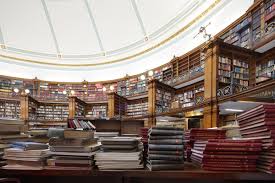I came across this piece from a newspaper article written by George J Binns in 1932. He turns out to be a first cousin four times removed, and Jonathan Binns, MD, 1747-1812, his great-grandfather is, by our generation, a great, great, great, great, great-grandfather. Apparently there is a transcript of the diary in the Liverpool Central Library.
” The request for records of Victorian funeral customs has recalled to me the following account of a Quaker funeral at Liverpool, in 1774. It is taken from the diary of Jonathan Binns, MD, 1747-1812, my great-grandfather.
July 16. Was at the Funeral of Sarah Chorley, late wife of Jno Chorley Mercnt in Liverpl to which there was a general invitation of Friends given at the week day Meeting before & a particular invitation on Cards sent along with white Gloves to the Friends with whom they were more particularly acquainted; as also to a few Gentlemen of their particular acquaintance; & to all the Ladies that she had visited since she came to town: the form of invitation was as follows.
“Doctor Binns’ attendance is desired to
the funeral of Sarah Chorley tomorrow at
2 o’clock to go out at 3.
July 15, 1774.”
The Uncles aunts & nearer relations not only of the deceased but also of Jno Chorley’s sat in the room where the Corps lay; the Cousins & the BEARERS in another room upstairs; the Ladies in another; all the Friends (except relations or Bearers) in the large Parlour; and the Gentlemen were in a room at their neighbour Savages…..
The procession from their house in Hanover Street, to our Meeting house & Burial Ground was as follows.
The Men invited to the funeral went first without order; next the Eight Women Bearers drest in long Hoods & light drab Gowns went two & two: after them the Hearse containing the Corps drawn by two black Horses; the driver had no black Cloaths but no Cloak as is customary; next to this Jno Chorley, his late Wife’s Mother & one of her Sisters, then another Chariot with the other Sister & two other aged female relations who cou’d not very well walk.
The rest of the relations followed on foot, & after them the Women drove up the rear.
The streets were lined with a great number of spectators, & it was with great difficulty that we got to the Meeting house Doors, as they were kept shut, to prevent the rabble from filling the Meeting house before those that were invited got it: on which acct the astonishing crowd which had collected together on the occasion cou’d not easily recede to make way by reason of the narrowness of the street, & others pressing down at the other end; at length with some difficulty & danger of driving over people, but without any hurt (so far as I cou’d learn) the Hearse got just past the doors, the Corps was taken out & carried into the Meeting house under hand by the Eight bearers by towels passed thro’ the handles affixed to the sides & ends of the Coffin which was made of fine Mahogany, with the Initials of her name and her age in brass nails upon the lid. Four or more Friends stood at the doors to keep out rude people.
Two stranger public Frds were invited & came viz Margt Raine from Crawshaybth & Sarah Taylor frm Manchester. they were at Lancaster on acct of the Quarterly Meetg when the News got there of S Chorley’s death; they therefore came directly thence.
After sitting in Meeting abt 2 hours & something having been said by my Father & Sarah Taylor it was broke up & the bearers then took up the Corps & bore it to the side of the Grave when (after a few minutes stillness) it was let down & covered up. Then the relations & others withdrew, some of the nearest related returned in carriages to JC’s there were likewise Coaches order’d for the Bearers who accompanied them: and thus ended this truly solemn solemnity.
NB: A Dinner was ordered for thirty people (at Banner’s the Goldn Fleece in Dale st) that were to come at a distance; tho several came yet only six dined there.
George J Binns.
Notes & Queries, 27th August 1932 “

